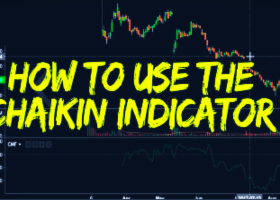Book Summary: The Little Book of Currency Trading by Kathy Lien
Please check our products: https://www.mql5.com/en/users/ashrafelrefaey/seller
Briefing Doc: The Little Book of Currency Trading
Author: Kathy Lien
Main Themes:
- Accessibility of Forex: The foreign exchange market (Forex) is no longer limited to large institutions. It is now accessible to individual traders and investors worldwide.
- Understanding Forex: Success in Forex requires a strong understanding of its mechanics, the forces driving currency fluctuations, and available trading products.
- Opportunities in Forex: The Forex market offers various opportunities for profit, ranging from short-term price swings to long-term trends.
- Approaches to Forex Trading: The book explores different approaches to Forex trading, including short-term trading and long-term investing, catering to different risk appetites and time commitments.
- Risk Management: Lien emphasises the importance of risk management in Forex trading, highlighting common mistakes and ways to avoid scams.
Important Ideas/Facts:
- Getting Started: The book provides guidance on entering the Forex market and finding a suitable trading approach.
- Driving Forces: Lien explains the factors that influence currency movements, including economic indicators, political events, and central bank policies.
- Strategies: The book outlines strategies to capitalize on currency fluctuations, taking advantage of global trends and reducing risk.
- Avoiding Mistakes: Lien identifies common pitfalls in Forex trading, helping readers avoid them.
- Scams: The book educates readers about common Forex scams and provides tips for identifying and avoiding them.
Quotes:
- "The subprime and the sovereign debt crisis showed us how we cannot focus solely on what is happening in our own little part of the world because, as we have seen, the problems in one country like the United States could destroy the economies of other countries."
- "In time of crisis, currency trading is a way to turn headlines into opportunities."
- "Listen to central bank officials.. What they say can impact currencies."
Customer Reviews:
- Readers praise the book for its clear and concise explanation of Forex basics, making it an excellent introduction for beginners.
- Customers appreciate the practical trading methods and insights into the fundamental drivers of the market.
- The book is lauded for its engaging writing style and the novel ideas presented.
Overall Impression:
"The Little Book of Currency Trading" provides a comprehensive overview of Forex trading, covering essential aspects from market mechanics to risk management and scam avoidance. It caters to both beginners seeking a solid foundation and experienced traders looking for new insights and strategies. The book's clear language and practical approach make it an invaluable resource for anyone interested in navigating the dynamic world of Forex.
Please check our products: https://www.mql5.com/en/users/ashrafelrefaey/seller
Forex Trading FAQ
1. What is Forex, and why has it become more accessible?
Forex, short for foreign exchange, is the world's largest financial market where currencies are traded. It was previously dominated by large institutions but is now readily available to individual traders and investors due to advancements in technology and the rise of online trading platforms.
2. What are the key opportunities in the Forex market?
The Forex market offers various opportunities to profit, both short-term and long-term. Short-term traders can capitalize on rapid price fluctuations, while long-term investors can benefit from global trends and currency movements over time.
3. What are the main drivers of currency value fluctuations?
Several factors influence currency values, including:
- Economic Data: Indicators such as interest rates, inflation, and GDP growth can significantly impact a currency's strength.
- Political Events: Elections, policy changes, and geopolitical events can create uncertainty and volatility in the Forex market.
- Market Sentiment: Trader and investor sentiment can drive currency movements based on perceived risks and opportunities.
- Central Bank Actions: Central banks can influence currency values through interest rate adjustments, monetary policy interventions, and public statements.
4. What are the different approaches to Forex trading?
Two primary approaches to Forex trading are:
- Fast and Furious: This approach focuses on short-term opportunities and frequent trades, aiming to profit from small price movements. This strategy requires active monitoring and quick decision-making.
- Slow and Steady: This approach involves long-term investments based on fundamental analysis and global economic trends. It requires patience and a focus on broader market movements.
5. How can Forex be used to reduce risk?
Diversifying your investment portfolio with different currencies can help mitigate risk. By spreading investments across multiple currencies, you can reduce your exposure to the volatility of any single currency.
6. What are some common Forex trading mistakes?
Some common mistakes include:
- Lack of Education: Trading without sufficient knowledge of the Forex market, its mechanisms, and risks can lead to substantial losses.
- Overleveraging: Using excessive leverage can magnify both profits and losses, increasing the risk of significant losses.
- Emotional Trading: Making impulsive decisions based on fear or greed rather than a well-defined strategy can lead to poor trading outcomes.
7. How can I identify Forex scams?
Be wary of schemes that promise unrealistic returns with minimal risk. Thoroughly research any Forex broker or investment opportunity before committing funds. Legitimate offers should be transparent and provide clear information about risks and fees.
8. What are the essential first steps to get started in Forex?
To begin your Forex journey:
- Educate Yourself: Gain a solid understanding of Forex basics, terminology, and trading strategies through books, courses, and reputable online resources.
- Choose a Broker: Select a reliable and regulated Forex broker that offers a user-friendly platform, competitive fees, and excellent customer support.
- Develop a Strategy: Determine your risk tolerance, investment goals, and preferred trading style. Develop a clear plan that outlines your entry and exit points, risk management rules, and profit targets.
- Start Small: Begin with a demo account to practice trading without risking real money. Once you feel confident, start with a small investment and gradually increase your exposure as you gain experience.


